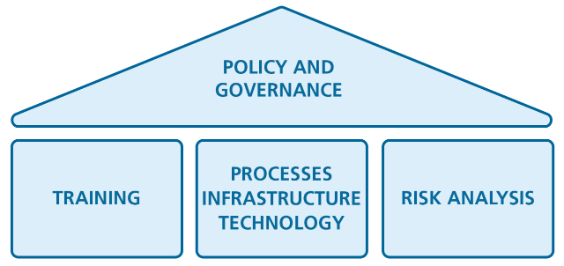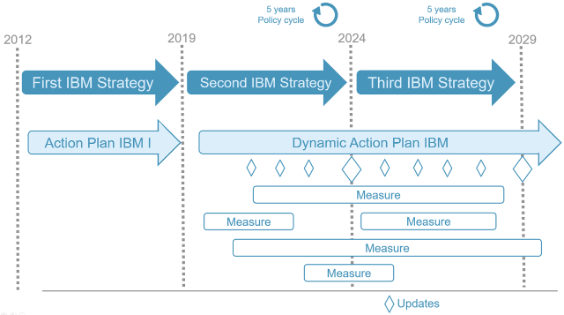Working closely with the authorities concerned, SEM has developed the Integrated Border Management (IBM) Action Plan to put the IBM Strategy into practice. The Action plan is designed to be constantly evolving. This way, the action plan can be continuously adapted to changing challenges in the migration and security sector, providing flexibility when implementing measures and documenting the work of border control officers. For this reason, it is available exclusively in electronic form (on this website) and not in print or printable form.
The IBM Action Plan describes all the measures that need to be implemented to realise the IBM Strategy. It will be regularly reviewed and adapted to the situation on the ground – in particular to the migration, security and other challenges border control authorities face currently. Having an adaptive action plan in place makes it possible to consider current and future challenges in border management in a way that is modern, comprehensive and in line with EU recommendations. It also takes into account the lessons learned from the previous action plan.
The IBM Action Plan builds on two pillars: the key measures and the standard measures, which are listed in the action plan’s table of measures.
Key measures
Key measures are measures that require significant coordination and cooperation between the authorities involved. They are of particular practical and political significance. The Border Steering Group is responsible for these key measures and for the project overall, while management of the project is handled by the responsible authorities.
The reFRONT project was implemented as a key measure of the second IBM Strategy (IBM Strategy II 2019-24). The aim of project was to review cooperation in selected areas of border control (training, risk analysis, processes, infrastructure and technology as support processes, and policy/governance as an overriding topic). On behalf of the Federal Council and the CCJPD, the authorities involved are to outline and expand on the recommendations from the final reFRONT report. The recommendations will serve as key measures for the action plan. The measures address in particular the need for action identified during the Schengen evaluation and the thematic evaluation of the IBM strategy.

- Bericht reFRONT (German) (PDF, 2 MB, 29.11.2023)
-
Rapport reFRONT (French) (PDF, 5 MB, 29.11.2023)
(This document is not available in English)
Standard measures
The action plan’s standard measures are short-term tasks or projects to meet the objectives of the third IBM Strategy.
A standard measure is a task an authority carries out that goes beyond what is legally required of them. What is not meant here are core day-to-day activities that are carried out to meet a legal mandate (e.g. border checks), but rather measures that make it possible to more easily, simply and effectively meet such a mandate. Standard measures must be limited in time; they are considered completed when the improvements have been successfully made. In short, they are tasks and/or support projects carried out in order to facilitate the fulfilment of traditional border management tasks (e.g. setting up Automated Border Control (ABC) Gates at airports).
The following is a list of criteria for a task or project to be considered a standard measure:
- A short-term task or project aimed at realising the third IBM Strategy objectives;
- that is not considered ‘daily business’ and not expressly required by law;
- and that is limited in time.
SEM will continuously update its list of standard measures based on the information it receives from the responsible authorities. The standard measures are an important part of the action plan and are published in the table hereafter. The cantons and federal authorities with border management responsibilities will implement and manage their projects themselves and periodically report back to SEM. Both key measures and standard measures will contribute equally to the realisation of the third IBM Strategy’s objectives, and together form the IBM Action Plan.

Monitoring and updating intervals of the action plan
The action plan will be updated in intervals that are synchronised with the meetings of the Border Steering Group. In principle, this will occur every six months. In these meetings, the authorities concerned will be invited to present the progress they have made with their projects. Where appropriate, SEM will identify and actively inform the public about changes to the action plan directly on the website.
Last modification 26.04.2024







